
The Kouroi of Flerio near Melanes
Close to the village of Mélanes lies a hill with marble of high quality that has been quarried since antiquity. The marble was used for the construction of buildings as well as for statues. Not too far away, marble is still being quarried today on a large scale. The area of Mélanes was inhabited since the Bronze age (3rd millennium BC), and its marble may have been used since then. Right next to the area of the antique marble quarry an excavated sanctuary of the springs and the protector gods of the quarry can be visited.
The peak time for the use of the quarry was during the 7th and 6th centuries BC in the Archaic epoch, but marble was also mined during the rest of antiquity. This quarry is one of the oldest in Greece. The island of Naxos was one of the first places in Greece to develop monumental marble sculpturing. From here techniques of marble processing and temple architecture were exported to the neighboring islands and to other parts of Greece. Today the area of the ancient quarry is most known and visited for the two unfinished antique kouroi (plural of gr. Koúros = statue of a young man) that still lie in the quarry. The colossal, 9 meter high marble statue of Apollo in Delos, the largest kouros ever erected, also came from here.
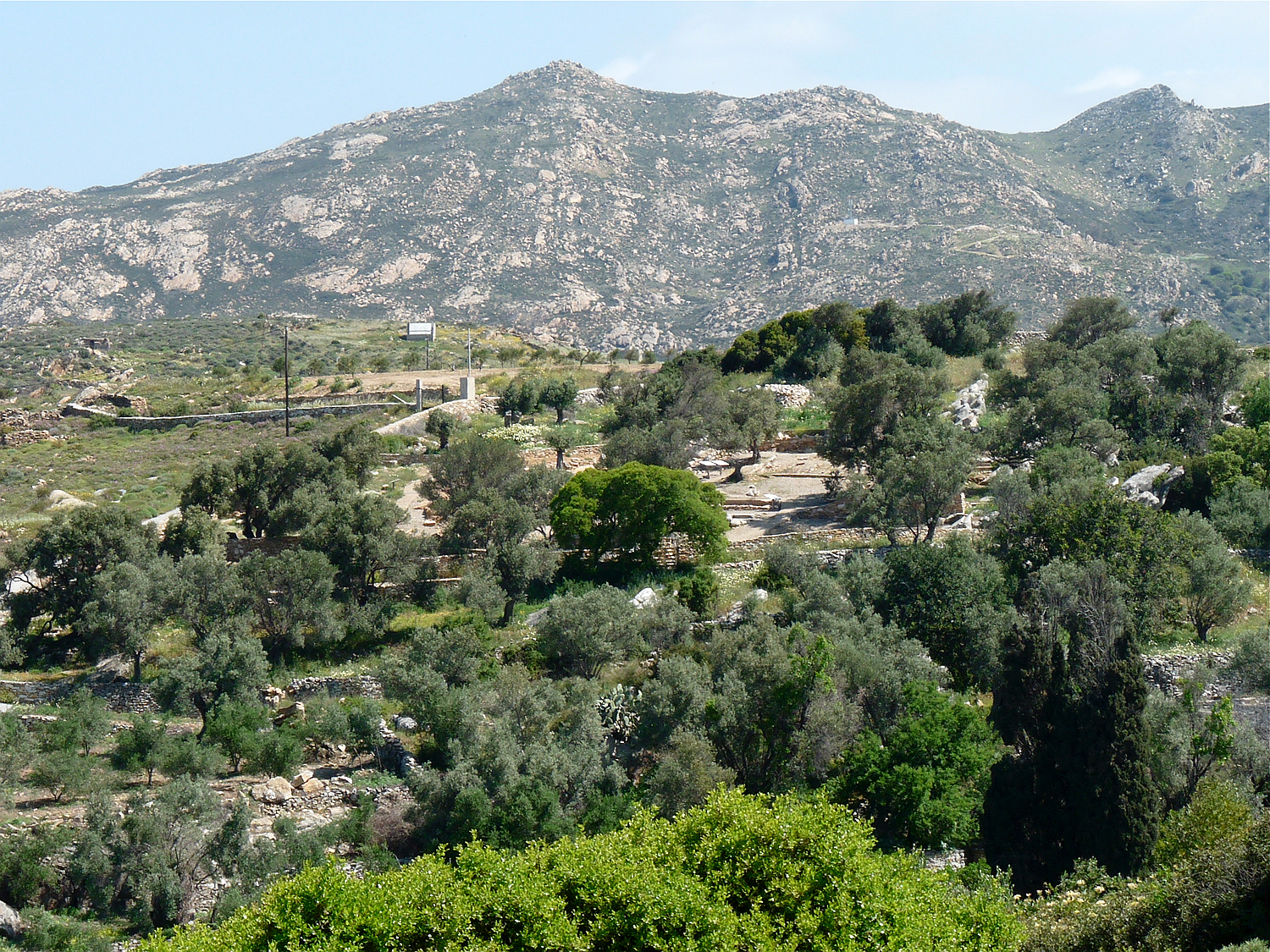
the area of the sanctuary
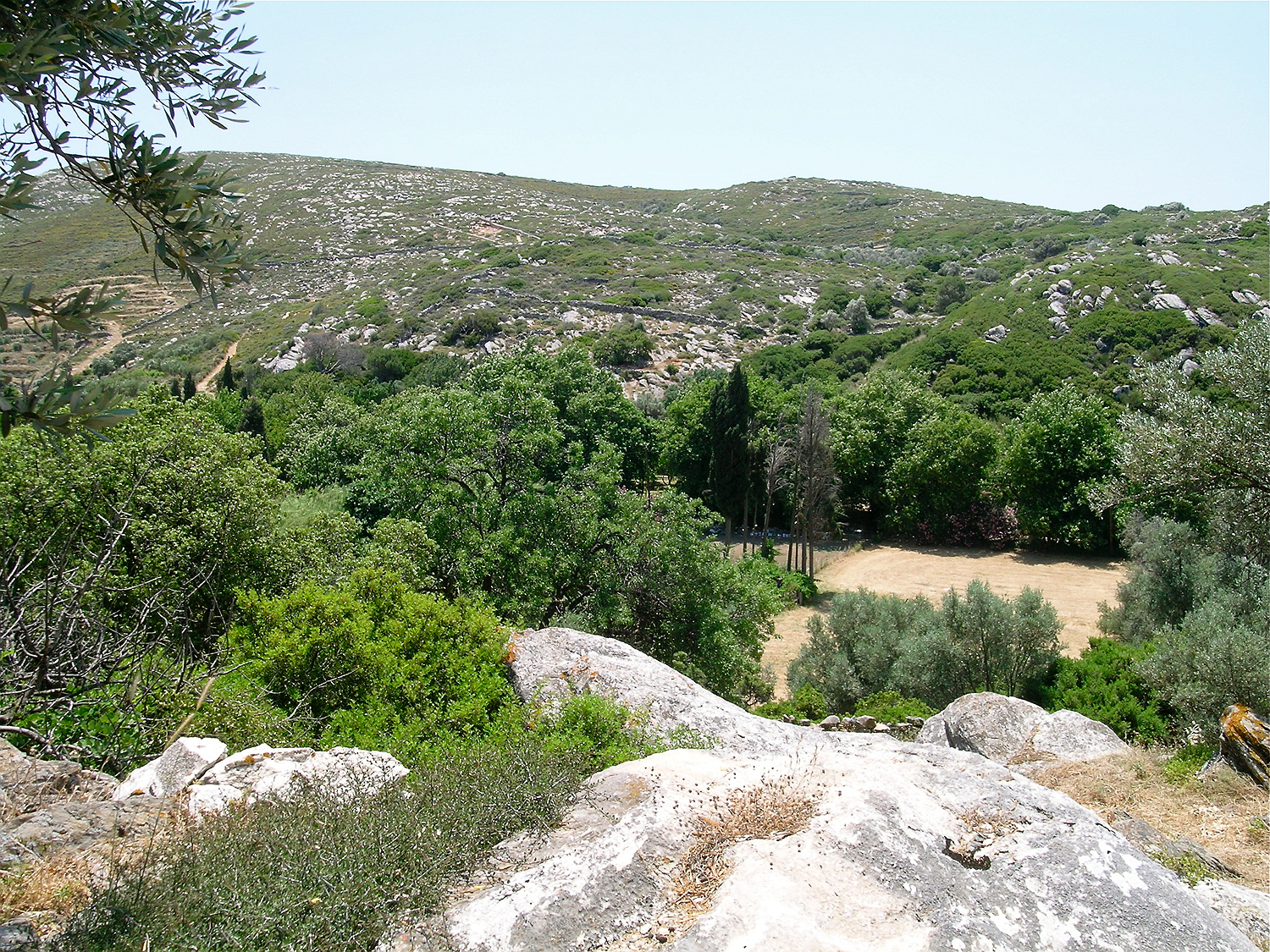
View over area of the ancient quarry. One kouros lies in the middle of the picture in the small incision in the vegetation, the other to the upper left in a small brown area on the slope.

part of the ancient quarry

One can still see traces of the marble quarrying.

The whole area has marble of good quality.
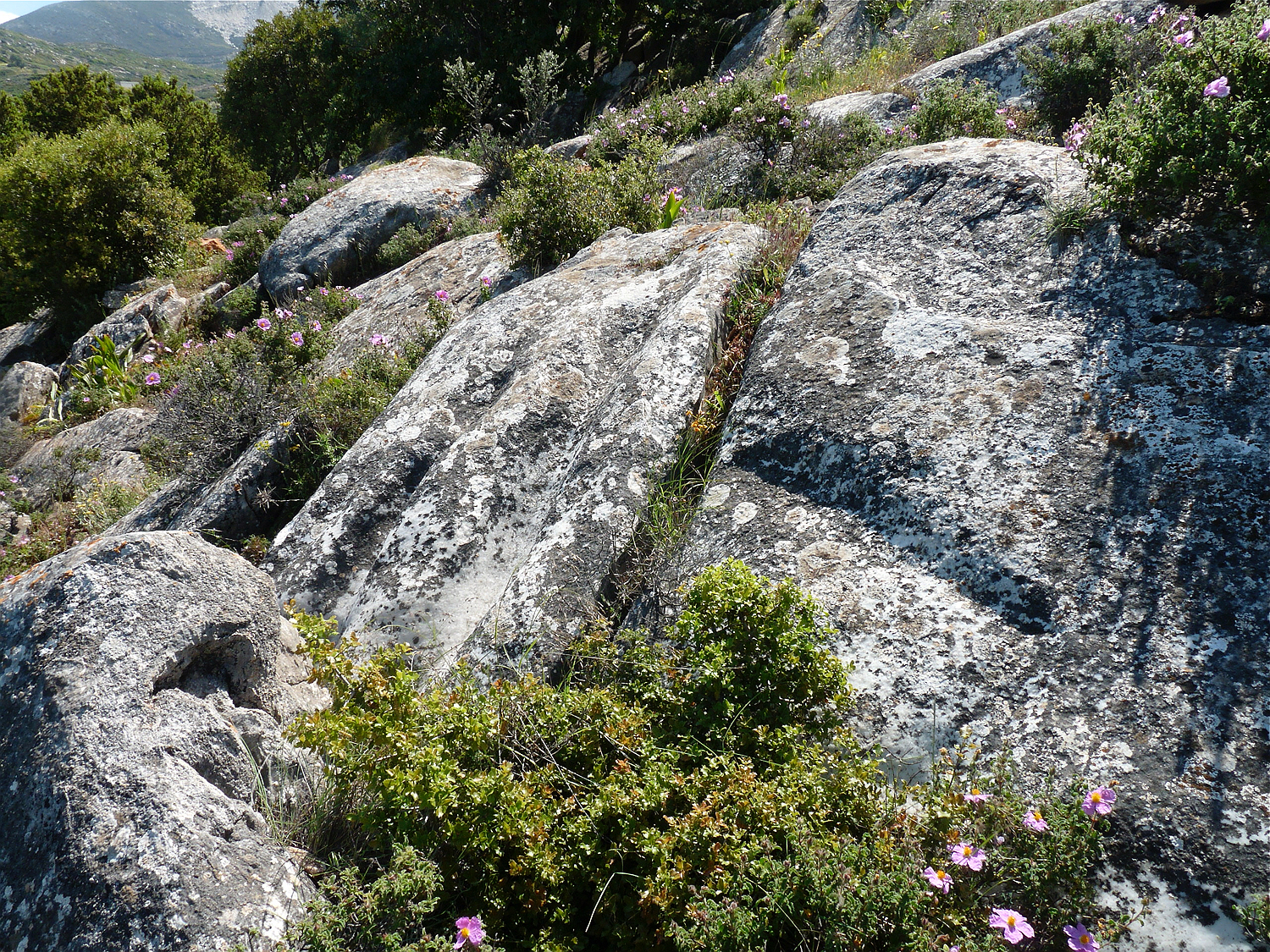
The cuts on these rocks also show that marble blocks were mined here.
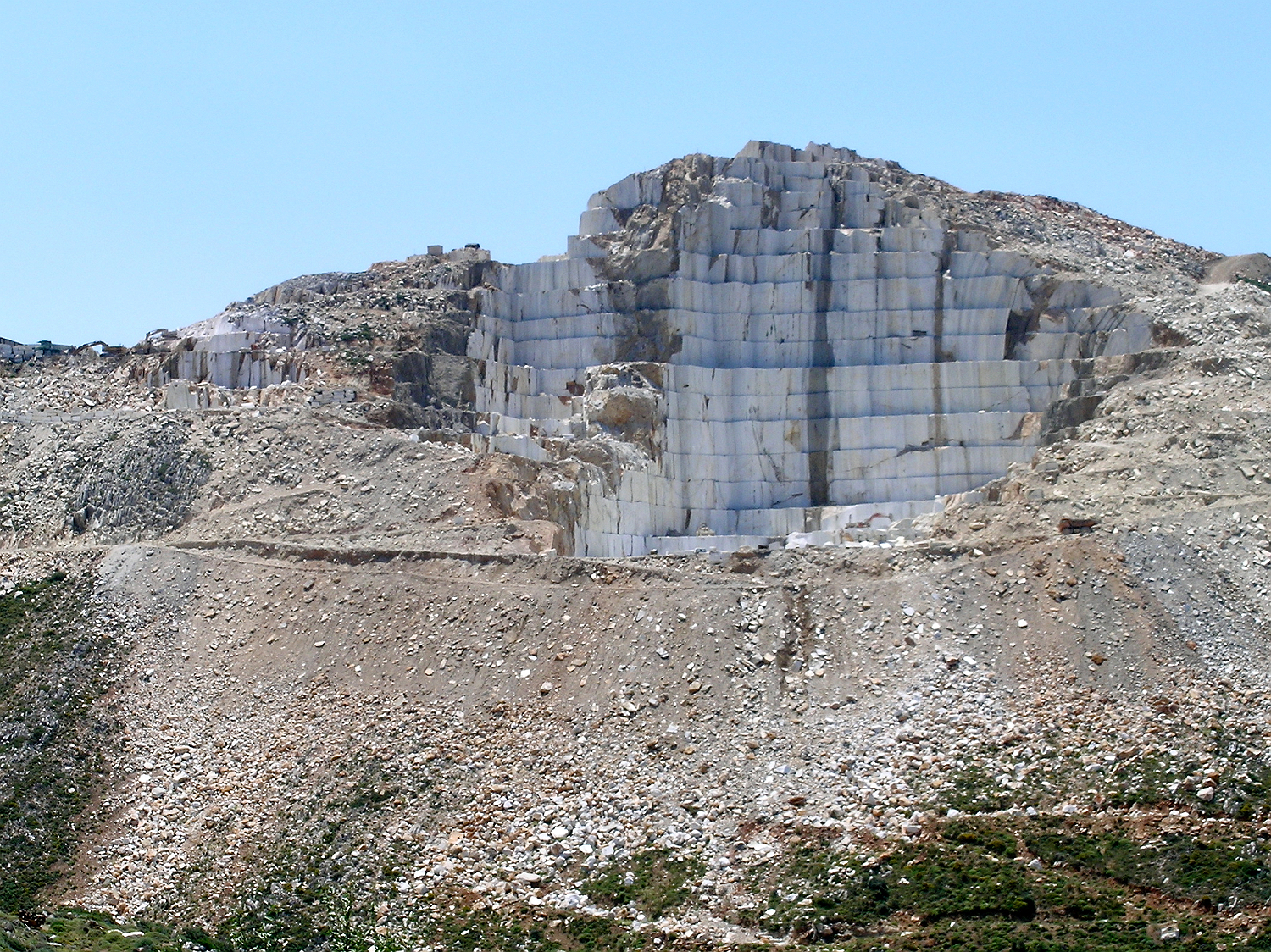
Not far away lie the present-day marble quarries.
In the ancient quarry still lie two kouroi (pl. of koúros = statue). From this quarry also originated the largest ever erected Greek marble statue: the 9 m high statue of Apollon on Delos. The “Kouros of Flerió” was probably made around 570 BC. It has a size of about 5.5 metres and weights about 6 tons. It was probably commissioned by a major figure of the then aristocratic society, who wanted to erect a lasting monument of himself.
Statues such as this kouros were only roughly shaped in the quarries, so as to reduce the weight but keep the possibility of damage during transport low, and then finished at their final location. The transport was achieved with wooden sledges on ramps of marble chippings. In this kouros, the body shape has already been worked out; only the arms have not yet been separated from the body. The graceful posture and the fine, “meatless” design of the body is characteristic of the Naxian marble sculptures. The Kouros does not lie in the place where it was cut, but was already moved a bit. It was presumably left in the quarry because one leg broke during transport.
You can find more information about the ancient marble sculpturing on the page about the Kouros of Apollonas.

the “Paradise Garden” next to the Kouros where you can drink a coffee or buy small souvenirs and specialties
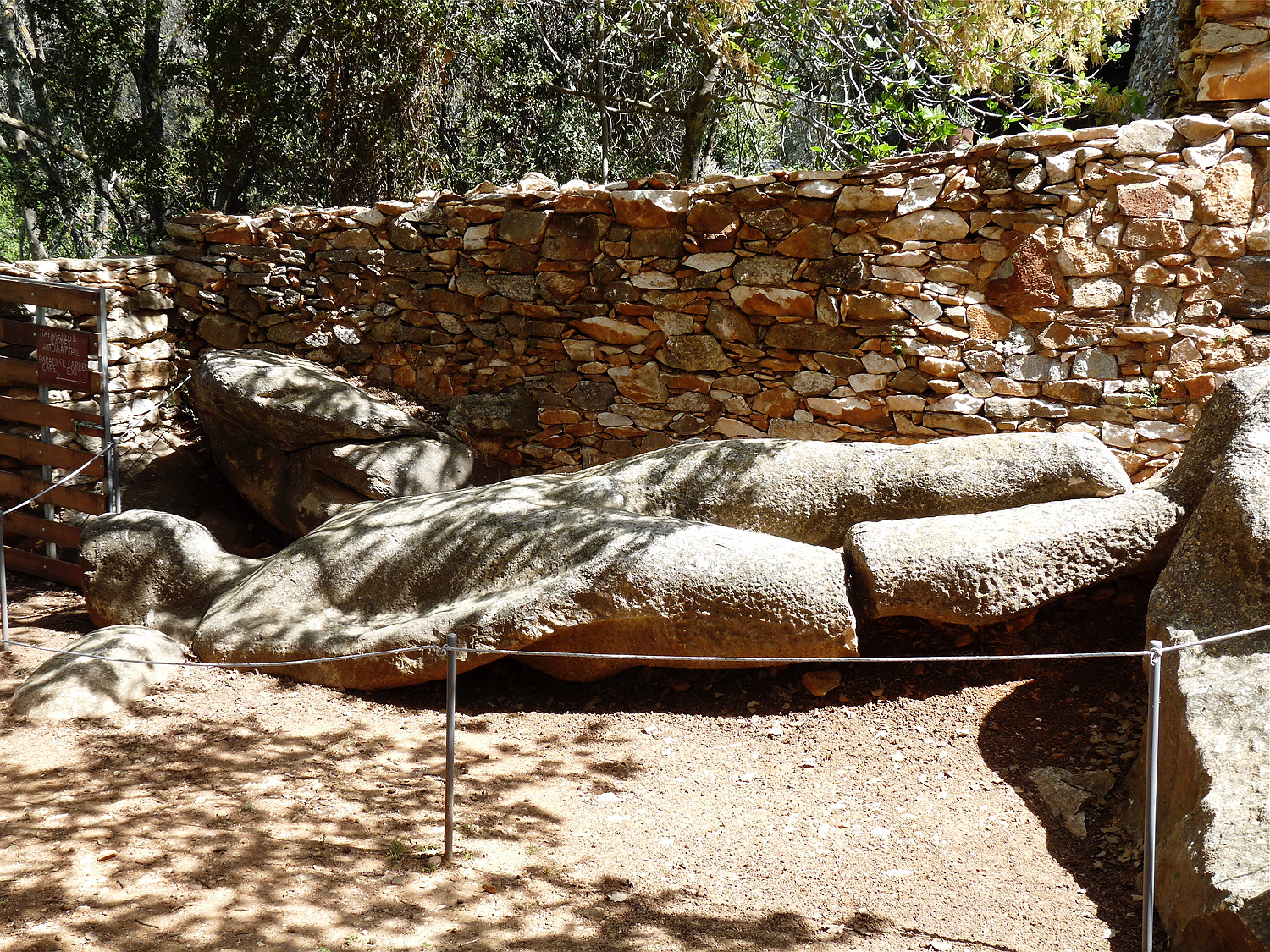
the Kouros of Flerió

The Kouros lies under a large oak tree.

traces of quarrying close to the Kouros
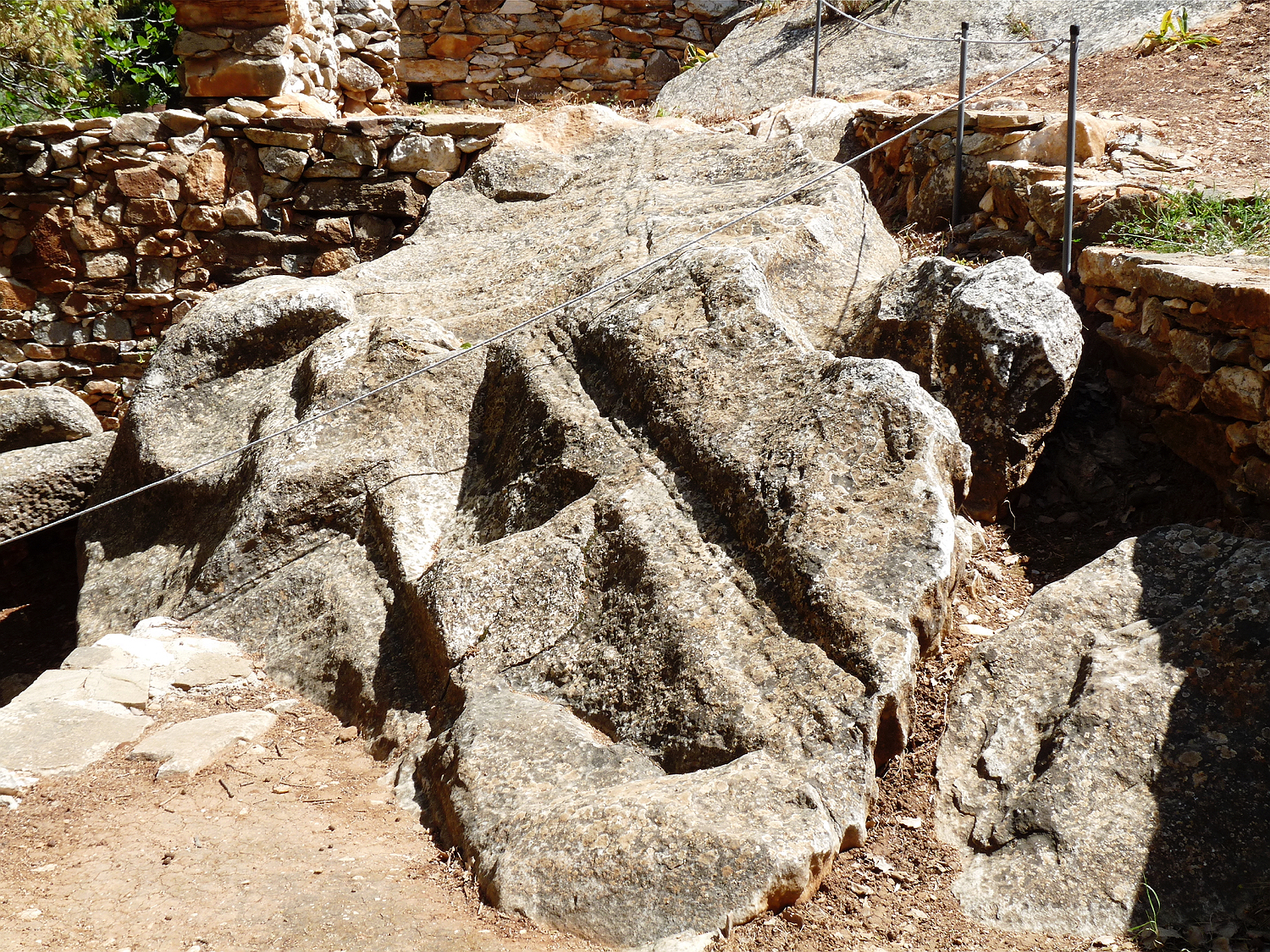
the same
On the slope in several hundred meters distance lies a second, similar kouros (“of the Farangi”), which was only recently made accessible by a beautiful path.
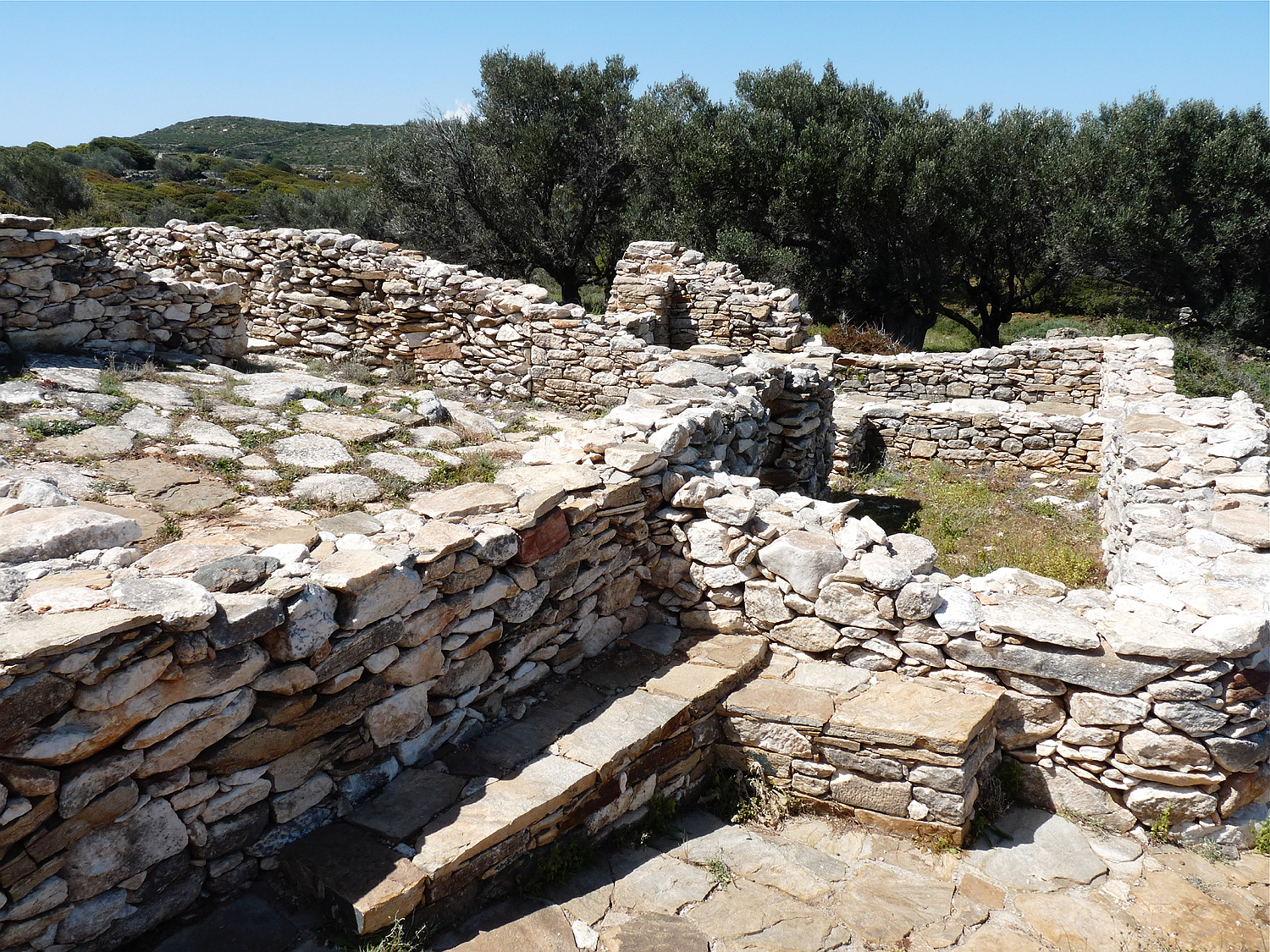
On the way to the second kouros
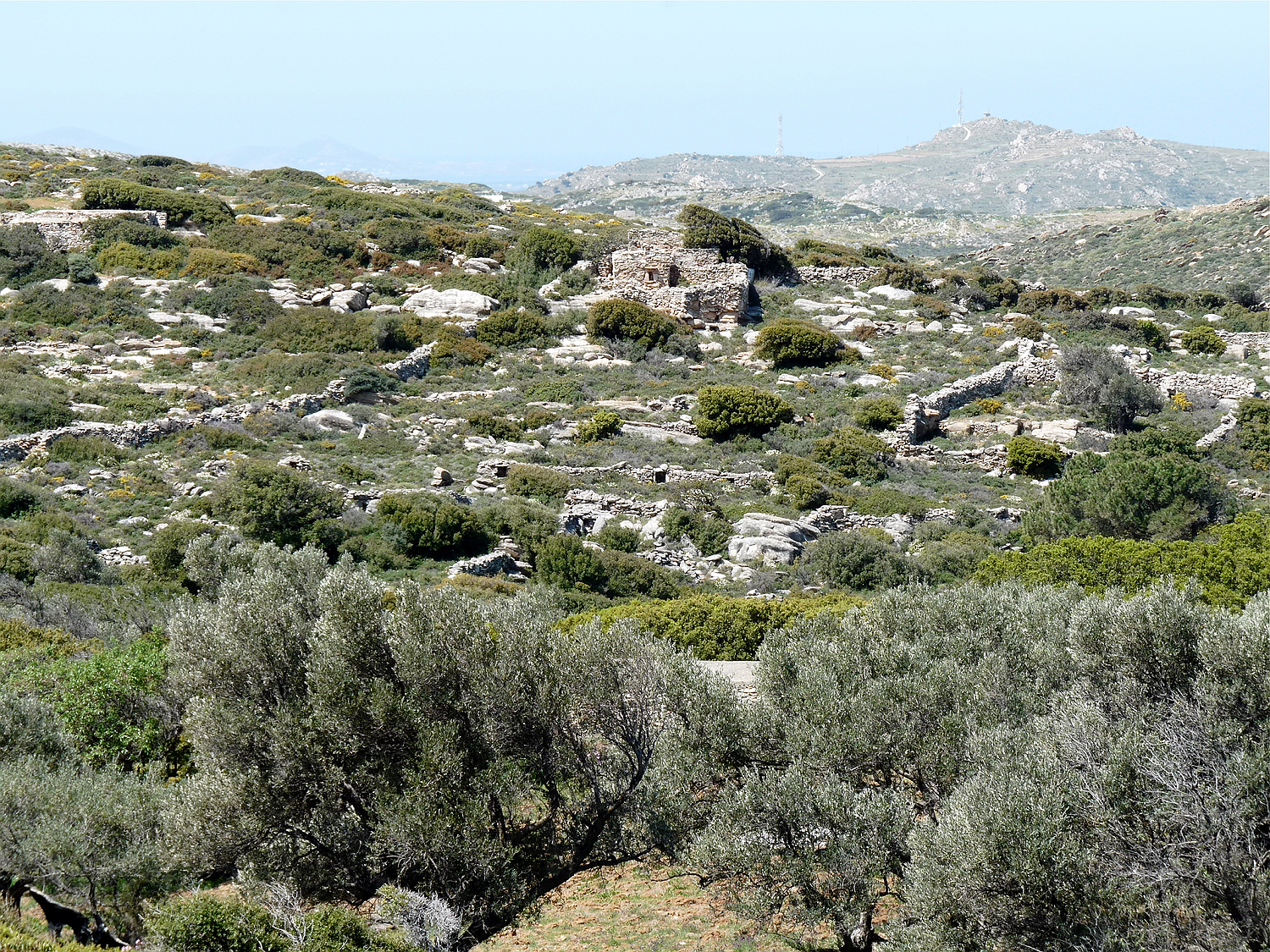
View over the hill above the quarry. The formerly cultivated areas are now overgrown with brush.
Halfway up the hill you reach the second kouros, which lies nearly in its original location and is a bit smaller than the first one. While the open, long hair is a rather ancient feature, the relaxed posture suggests that it was made around the middle of the 6th century BC. This kouros, like the other one, was apparently left behind in the quarry because its feet broke off during transport.
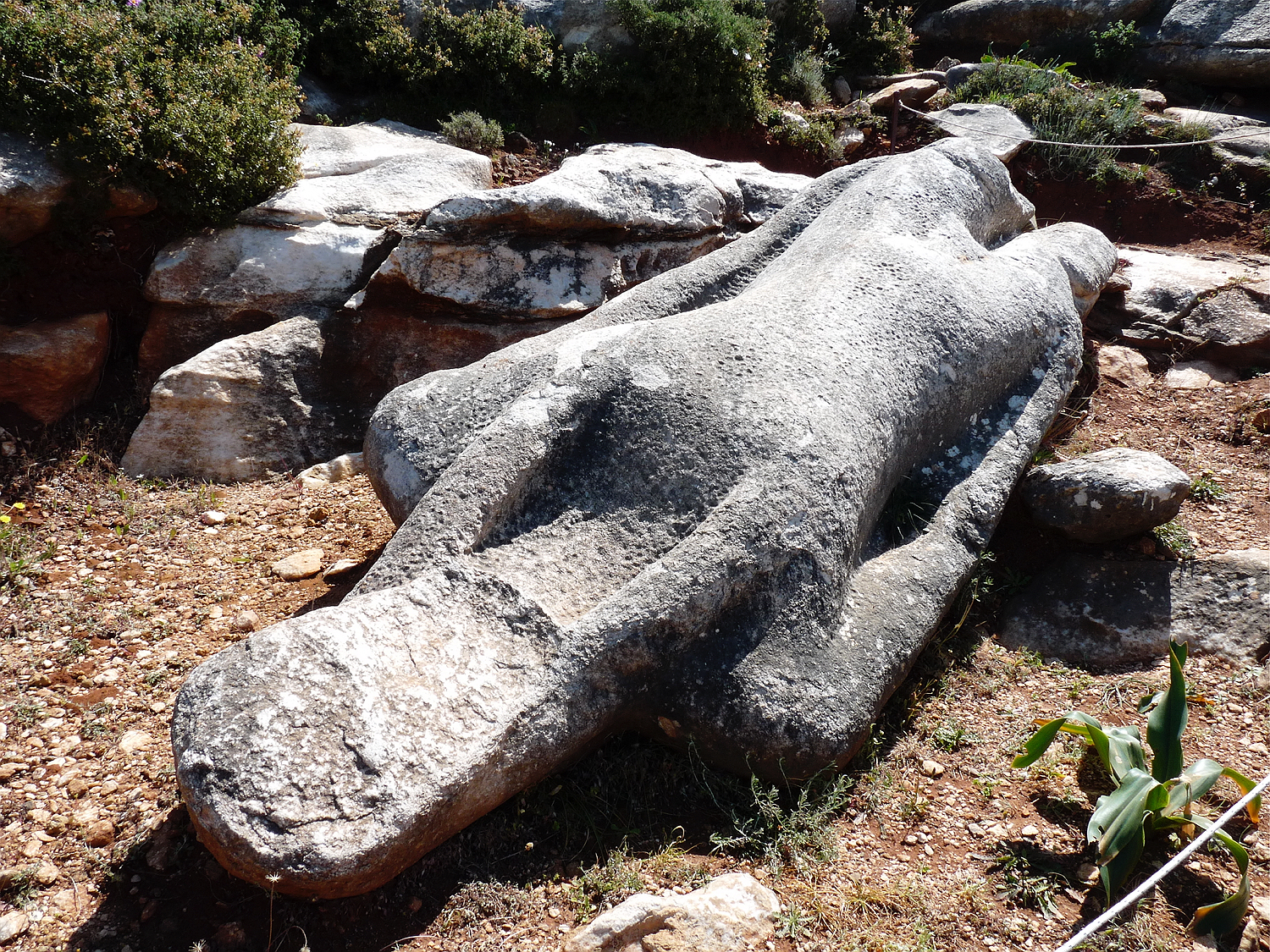
The Kouros of the Farángi is a little bit smaller than the Kouros of Flerió.
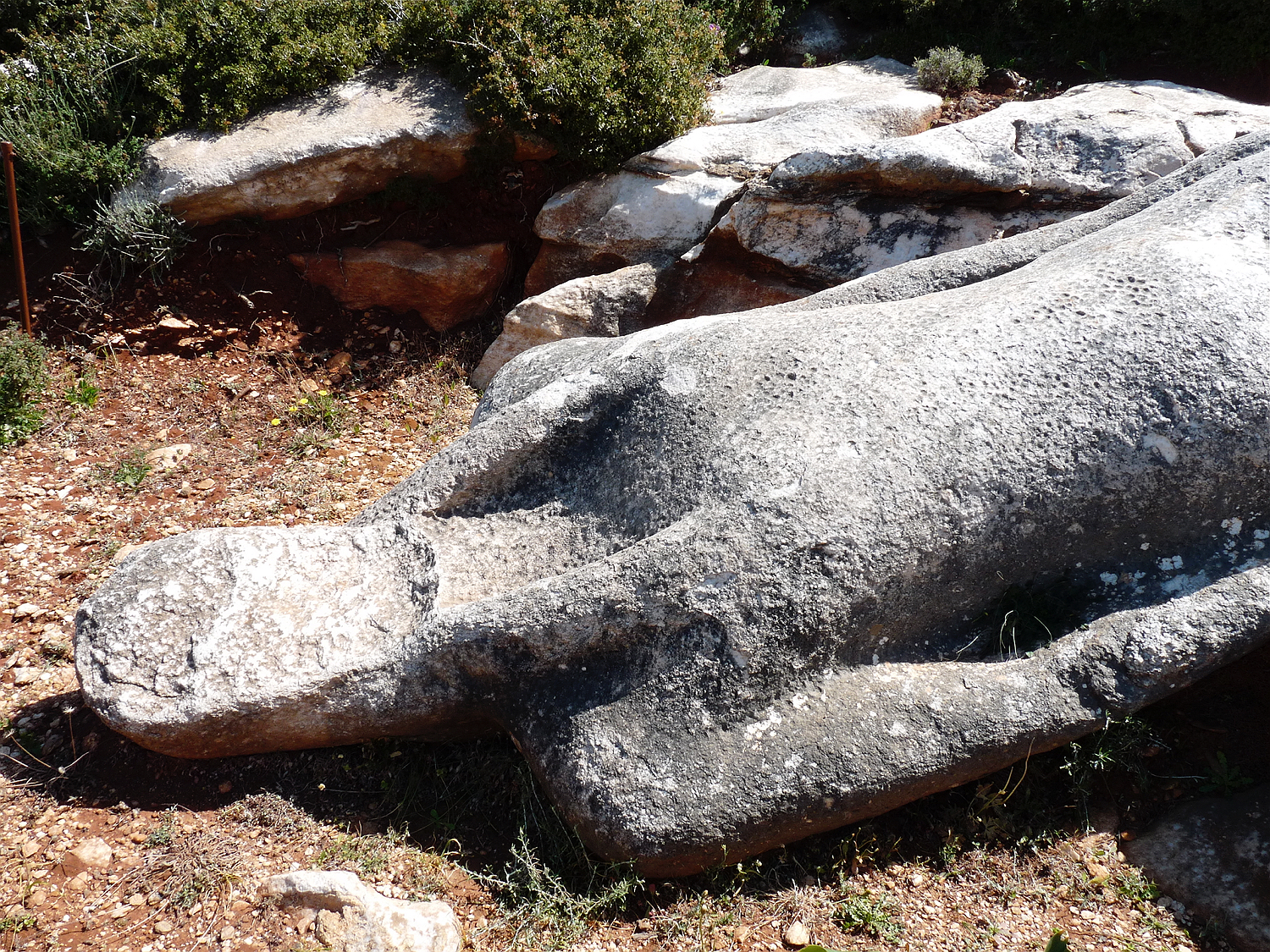
The face of this kouros is damaged. It portrayed a man; the loose, long hair is common with the more ancient kouroi.
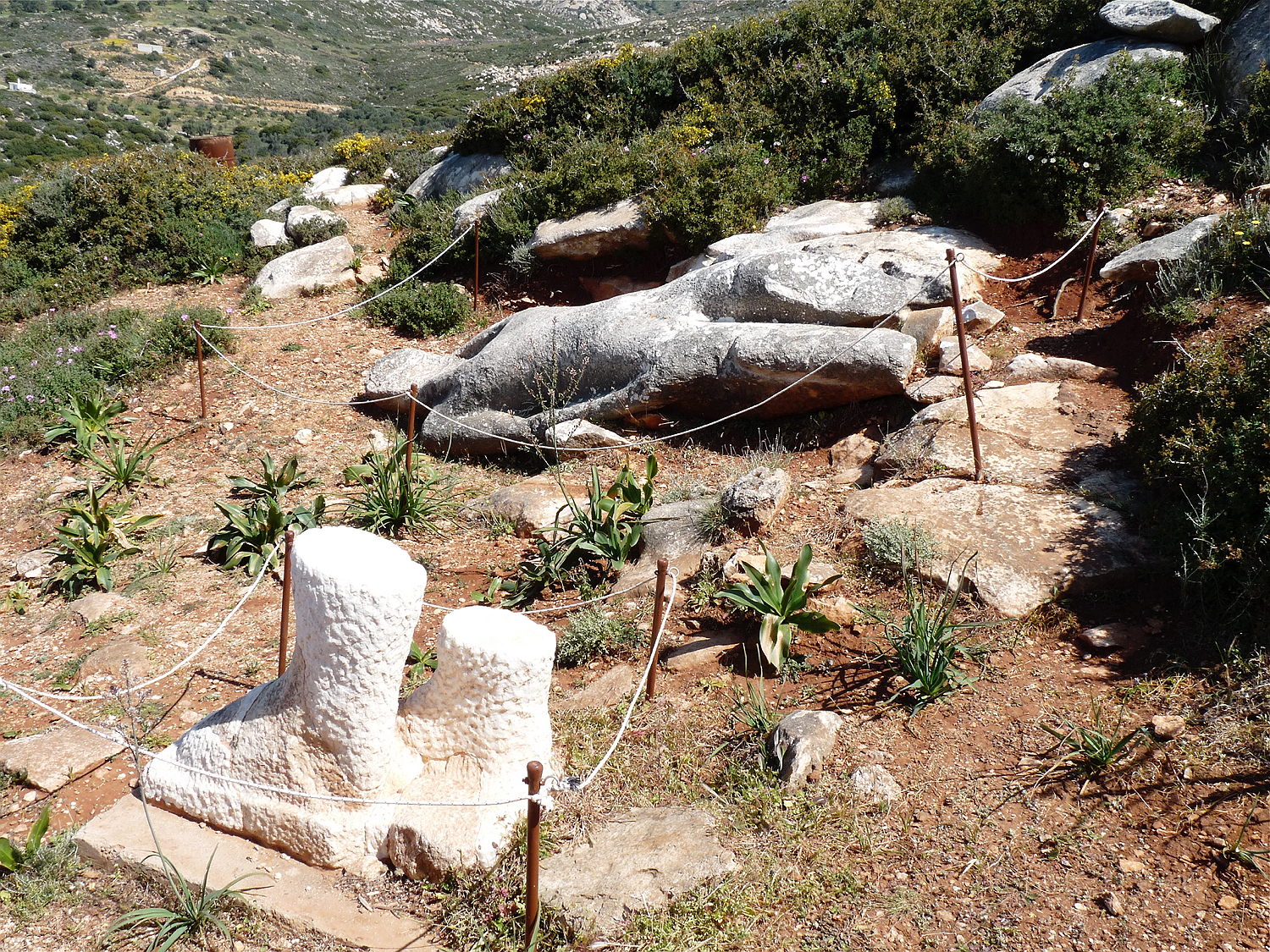
Not far from the kouros the feet, which broke off during transport, were found (the piece that is set up here is in part a reproduction).
continue:
back: Quarries and statues
see also: